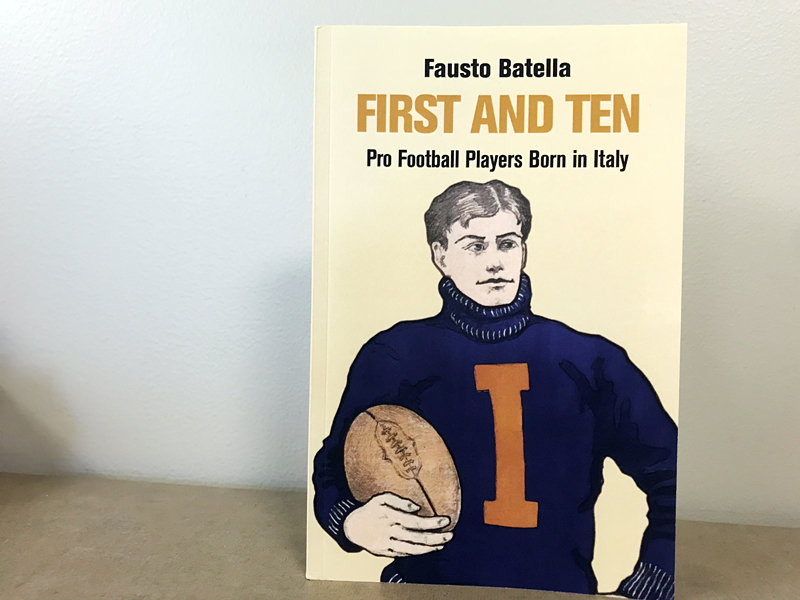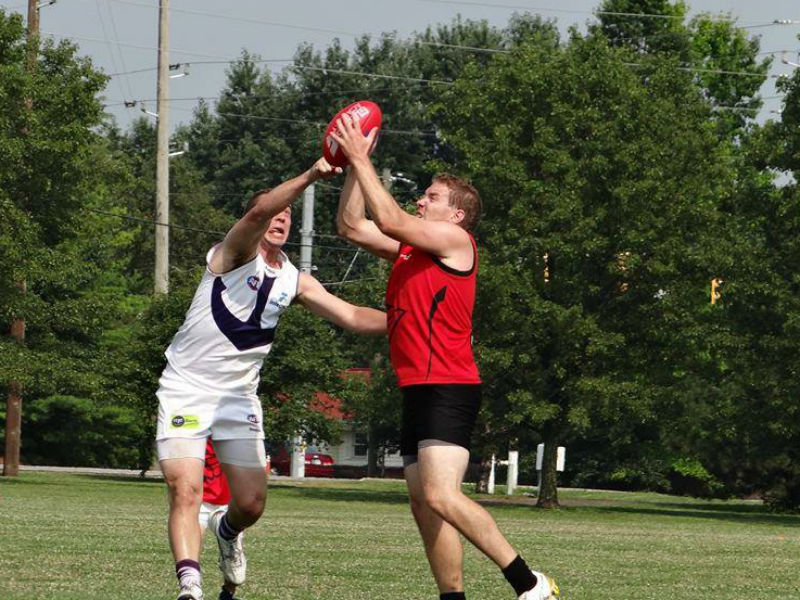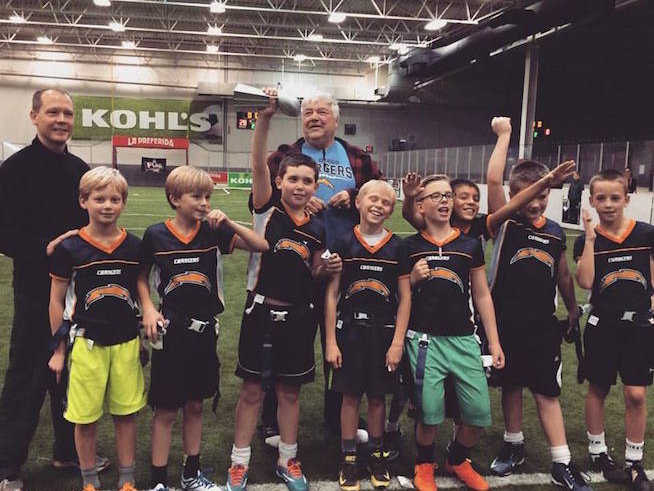Bounties. Concussions. Lawsuits. Suicide.
These are the NFL buzz words littering the off-season air of late, making headlines in areas the league wishes would vanish.
Will the landscape of football suffer because of all the negative press? Will prep players' parents think twice about signing the waiver form and walk their son away from the game fearing for the future of a teenager?
Five high school head football coaches who have been in the trenches of dealing with the dilemmas of keeping a player in one piece offered up their opinions on the latest matters in the sport.
The roster includes:
- Dave Keel, Homestead High School for 20 years
- Frank Matrise, Kenosha Tremper High School for 20 years with two prior years at Kenosha St. Joseph's
- Clay Iverson, entering his first season at Mukwonago High School after seven years at Pewaukee
- Rob Stoltz, Greendale High School for 11 years
- Tom Swittel, Brookfield East High School for two years after 15 years as the head coach at Wauwatosa East
While it may be a minuscule sample size, the thoughts of these experienced coaches take the temperature on whether or not the game at the high school level will be impacted enough to see any significant drop in numbers or concerns.
"As much as I'd like to dismiss that, I don't think you can," said Iverson. "We're in an interesting spot in high school football right now. We've got a lot of really good football players in this state, and we do see parents asking a lot more questions, which is good."
"You'll have some kids that will shy away, but I think if coaches do the right thing and come out on a positive manner from the top down and explain we're all in this for the best interest of the kids, I think it will be something where parents will want their kids to play," said Matrise. "I take pride in that, saying I want to watch out for kids and make sure they are OK."
The awareness has increased, but so have the numbers. There has been no parallel avalanche of football players de-committing fearing the risks of what lies ahead. Coaches like Stoltz and Keel are keen to the fact that the health and safety of a player trumps victories.
"I think as long as we promote to parents that we are interested in the best interest in the health of their son we won't have an issue," said Keel. "We do that, and will continue to do that. If there are any issues with a young man, he is not going to be put at risk. I think we're OK long term as long as we maintain that focus."
"The reality is football and concussions are scrutinized to the nth degree in the last handful of years, and it's very much in the public consciousness and it will continue to be as it should be," added Stoltz. "But I believe that five years from now it's not going to be the Flavor of the Day from a media standpoint.
"Could we suffer a decrease in the numbers? It's possible for sure, but I would not expect it to be anything substantial and I think largely because people are becoming more educated and they understand the risks going in."
It doesn't help when Junior Seau graces the cover of Sports Illustrated with an article that acts as his obituary. Parents read the text and digest the questions why these warriors in the NFL lose control of their thought process after seasons of pounding and head trauma. But high school coaches share the fear factor and refuse to roll the dice.
"I think the high schools have actually been on the leading edge of safety, even ahead of the NFL," said Keel. "If any player exhibits any signs of a concussion, be it [in] practice or a game, there is a protocol that must be followed by the physician or trainer and coach. Those things are completely out of the hands of coaches these days, which is a good thing."
Stoltz, who suffered head injuries while playing at Greendale and later UW-Oshkosh, didn't need any chart to guide him in concussion awareness.
"If there is anything you don't mess around with it's your brain," said Stoltz. "But I don't have that increased sense only because I think I'm already on alert. When we have players and they get their head dinged, you're done. I'm not going to go to the trainer and ask if he's good to go ... he's done.
"As a coach, I'm not someone questioning any decisions because I've been on that end as a player."
"A lot of us came from the era of shaking it off, but now it's not our job to make that call," added Iverson. "None of us are trained to decide if a kid has a concussion or not, so if you're going to make a mistake, you've got to make it on the side of safety for the kid."
Matrise learned firsthand that concussions require strict attention. Back in his playing days at Kenosha St. Joseph's, Matrise suffered a serious blow to the head as a sophomore. His father, also the Lancers Athletic Director, was ahead of the curve.
"We were lucky because we did have a team doctor and I can remember coming home that night and my dad consulting him as far as what to do and taking the proper procedures and what to look for," said Matrise. "I can remember my parents on the hour, every hour, waking me up to make sure I was OK.
"The credit goes to my dad, and he's preached that to me as far as safety for student athletes."
Swittel, who played high school football at Marquette followed by college action at St. Norbert, shared stories of suffering hits that resonated well after the collision.
"Even though I was never diagnosed with a concussion and never in my mind lost consciousness, there were times where I got my bell rung pretty good," said Swittel. "The last game of my college career playing at Dayton I walked into the wrong huddle and had no idea where I was. A couple of my teammates had to grab me and pull me into our huddle. I never left the game and I'm sure that would never happen today."
Swittel has a radically different approach for sidelining a player today, and not strictly as a coach, but as a parent. Ironically, it was an incident not involving his 8th-grade son, but his daughter, Taylor, a gifted soccer player at Brookfield East who suffered a concussion after taking a knee to the head.
"It made us sit back and say, 'Holy cow, this is serious stuff,'" said Swittel, whose daughter will play collegiately at UW-Milwaukee next season. "I would be lying if I didn't say I'm a little nervous for her and don't want it to happen again."
Old-school thinking is no longer an excuse for ignoring the symptoms of a concussion. Coaches today rely on their own personal history to set the guidelines of maintaining safety in the game today.
"Like most guys my age who played in the early '90s, you got banged up a little bit, but back then, a concussion meant you were unconscious, and everything else was just you getting your bell rung and you got up and played again," said Iverson, a former New Berlin Eisenhower and UW-Eau Claire lineman. "You wanted to play and didn't want to be known as a guy who didn't want to play and came out because your head hurt.
"What you're seeing now is a change in attitude toward that injury, which is definitely good."
There is no guess work for the coaches anymore. The WIAA, Wisconsin Football Coaches Association and the National Federation of High School Football Association have developed guidelines that have been in place for some time now regarding treatment and returning to play following concussion issues. For starters, there's a seven-day wait if a player suffers a concussion, and it's out of a head coach's hands, period.
"As a football coach, I feel blessed that those kinds of decisions are not in my hands anymore," said Swittel, who is also the president of the Wisconsin Football Coaches Association. "I don't make a decision when a kid goes back in; that's a medical decision. And I never, ever, overrule the trainer or a doctor in terms of what they decide."
"The WIAA has a good model," said Keel, a former quarterback during his playing days at Milwaukee Hamilton and UW-La Crosse. "When in doubt, keep him out. And we've been doing that for awhile, so I think we're ahead of the curve as far as diagnosing, treating and return-to-play protocol regarding concussions, which is a real positive for our kids."
"I applaud that, because it took any gray area out of the equation for us as coaches and athletic trainers. There is pressure on the sidelines, people saying they need to get a player back in the game because he's our best player. I don't want to be in [that] position as a coach," Stoltz adds. "There are no amounts of state championships out there that can replace your brain.
"I don't want a player coming back in 15, 20 years saying he's kind of messed up."
While concussion treatment at the high school level remains a priority, preventing them in the first place is also in the forefront of the schools coaching staffs. Short cuts and budget cuts are never a crutch for allowing inferior equipment to filter into the locker room. An anonymous donor wrote a $17,000 check to ensure the Homestead varsity team had state-of-the art, top-of-the-line helmets. And in Greendale, Stoltz ensures fundraising efforts will outfit the Panthers in premium helmets and shoulder pads.
Tremper games in Kenosha finds Frank Matrise's sidelines stocked with a trainer, team doctor, ER nurse and a paramedic.
"To me, it's one of the most important things to err on the side of caution," said Matrise.
But all the medical personnel and NFL grade gear won't prevent a severe injury from occurring if a player decides to level an opponent at any cost. Injury decisions may have been taken off the plates of high school coaches, but teaching techniques certainly have not.
"I think it's important at some point that as coaches we need to stand up and say we're teaching this the right way and it's still a safe game if it's taught the right way," said Iverson. "One of the things we do is invite all of the parents to practice. They need to be able to see we coach their kids hard, but their safety is the biggest concern.
"We need to fight for the sport a little bit, and I think it's going to be on the people who coach this game to stand up for it and make sure we don't lose numbers."
That's why the New Orleans Saints bounty banter is disturbing in the high school ranks. Coaches who preach and practice the game correctly get a bad rap for the theme instilled at the highest level of the game.
"I'm not surprised at what goes on in the NFL, and the bounty thing was a bit extreme and fundamentally wrong," said Swittel. "I haven't taught using the head in blocking or tackling in forever, but there certainly was a time when that's the way it was taught."
"It's disappointing because it makes it seem like that's how the entire game is played," said Matrise. "We're not in a business to hurt athletes, we're in a business to help kids."
It would be incorrect to write off the comments of these men as coach speak. The thoughts and reflections from these five coaches, who total 75 years of high school football experience in the state of Wisconsin, aren't just lip service. Faced with the task of deciding the football fate of their own sons, they never flinched.
"To be very honest, I don't think there is any more trepidation now than I had when I played," said Stoltz, who has a younger son. "I did suffer a couple of low-grade concussions and they scare the bejesus out of you, because you can tell something isn't right. Coaching my brother, he was actually knocked out."
Iverson, who has coached all three of the Watt brothers during his stint at Pewaukee, including JJ Watt, who currently plays for the NFL's Houston Texans, has two sons. Watt was their hero, and they plan on following in his footsteps with Clay's blessing.
"If they play high school football where things are taught at an incredibly high level, my kids can do whatever they want," said Iverson. "I just think you can get concussions in other sports and all this stuff comes out from the NFL because it's the sport.
"Obviously football is a collision type game but other sports have this too. But I would never, ever, keep my kids out of football. What I might do though is find out more about the practices from the coach and how they teach tackling and blocking and if I felt comfortable with that, no way would I hold one of my sons out of playing the greatest game in the world."
Swittel's son will play, and so will the son of Matrise, who says "he's begging to right now, but I'm going to wait a few years and always look at the best way to play the game safely and make sure he's doing things the right way."
Keel's son played for his him at Homestead, and despite some setbacks that may chase some parents away, the head coach/father would do it over again.
"My son did suffer a pretty significant concussion in practice," said Keel. "We went to see the doctor and he told me, 'You know what coach, one more week would be better.' And I said OK.
"Our son was mad because he wanted to get into the game, but we sat him one extra week to make sure. But I wouldn't have an issue or concern. The game itself, there are plenty of issues, but I think we are doing a darn good job being in the forefront when it comes to head injuries."
Football may be getting a little ugly at the top, but the feeder programs at the high school level seem to have a grip on maintaining the safety and character of the game. Coaches may give off the aura they are hell-bent to win a football game, but their conscious and their gut is also steering them to play it safe.
"It's disappointing and it's sad because you hope everyone that gets into this game is for the right reason," said Iverson. "Ninety-nine percent of the men out there are teaching the game for the right reasons and no one is trying to injure someone. They're teaching it the right way and talking about building character and developing young men. It just takes a few high-profile deals to make everything that everyone is working so hard for to be tarnished ... and that's a sad thing."
"There are a lot of great men and women who are a part of the game of football who do a lot of positive things and the negativity always overshadows the positive," said Matrise. "If we take things in a positive manner and learn from the negative, you make it a teachable moment for the kids.
"Football is a great game but hopefully the things we teach in football – accountability and so forth – will help carry you the rest of your life."
Bob currently does play-by-play at Time Warner Cable Sports 32, calling Wisconsin Timber Rattlers games in Appleton as well as the area high school football and basketball scene. During an earlier association with FS Wisconsin, his list of teams and duties have included the Packers, Bucks, Brewers and the WIAA State Championships.
During his life before cable, Bob spent seven seasons as a reporter and producer of "Preps Plus: The Milwaukee Journal Sentinel High School Sports Show."
And the joke is, Bob has a golf shirt from all four Milwaukee television stations. Sad, but true: Bob has had sports and news anchor/reporter/producer stints at WTMJ, WISN, WDJT and WITI.
His first duty out of college (UW-Oshkosh) was radio and TV work in Eau Claire. Bob spent nearly a decade at WEAU-TV as a sports director and reporter.
You may have heard Bob's pipes around town as well. He has done play-by-play for the Milwaukee Mustangs, Milwaukee Iron, and UW-Milwaukee men's and women's basketball. Bob was the public address announcer for five seasons for both the Marquette men and women's basketball squads. This season, you can catch the starting lineups of the UW-Milwaukee Panther men's games with Bob behind the mic.
A Brookfield Central graduate, Bob's love and passion for sports began at an early age, when paper football leagues, and Wiffle Ball All Star Games were all the rage in the neighborhood.







